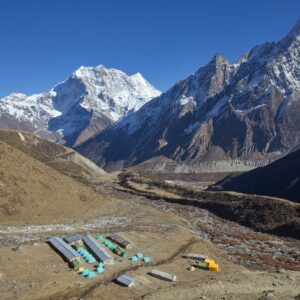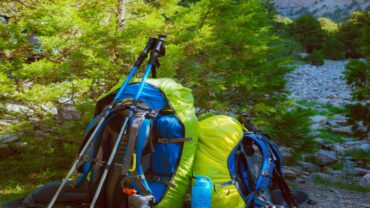Trekking to the Annapurna Base Camp is a dream adventure for many avid hikers and nature enthusiasts. Situated in the heart of the Nepalese Himalayas, the Annapurna region offers breathtaking views, diverse landscapes, and a rich cultural experience. However, embarking on this journey requires careful planning and preparation to ensure a safe and enjoyable experience. Whether you’re a seasoned trekker or a beginner, here are some essential tips to consider before setting off on your Annapurna Base Camp adventure:
Essential tips to consider before setting off on your Annapurna Base Camp adventure
- Train and Prepare Physically: Trekking to Annapurna Base Camp involves long hours of walking, often on steep and challenging terrain. Therefore, it’s crucial to train and prepare physically beforehand. Incorporate cardiovascular exercises, strength training, and long walks or hikes into your fitness routine to build endurance and stamina.
- Begin your training regimen at least a few months before your trek to Annapurna Base Camp. Focus on cardiovascular exercises like running, cycling, or swimming to improve your endurance.
- Incorporate strength training exercises such as squats, lunges, and core workouts to build muscle strength, which will help you tackle steep ascents and descents.
- Gradually increase the duration and intensity of your workouts to simulate the physical demands of trekking at high altitudes.
- Consider going on practice hikes or long walks with a loaded backpack to get used to carrying weight and test your gear.
- Pack Wisely: Packing light is key to an enjoyable trekking experience. Carry only the essentials, including appropriate clothing for varying weather conditions, sturdy hiking boots, a comfortable backpack, a sleeping bag, toiletries, sunscreen, and any necessary medication. Don’t forget to pack a refillable water bottle and water purification tablets to stay hydrated along the trail for Annapurna Base Camp.
- Prioritize lightweight and moisture-wicking clothing made from synthetic or merino wool materials that dry quickly and provide insulation even when wet.
- Invest in a good-quality pair of waterproof and breathable hiking boots with ankle support to protect your feet from blisters and injuries.
- Opt for a comfortable and well-fitting backpack with padded straps and a hip belt to distribute the weight evenly and reduce strain on your shoulders and back.
- Remember to pack essential items such as a headlamp, extra batteries, a multi-tool or Swiss army knife, a map and compass or GPS device, and a lightweight down or synthetic jacket for extra warmth.
- Acclimatize Properly: Altitude sickness is a common concern when trekking in high-altitude regions like the Annapurna Base Camp. Take your time to acclimatize properly by ascending gradually, staying hydrated, and listening to your body. If you experience symptoms of altitude sickness, such as headaches, dizziness, or nausea, descend to a lower altitude immediately and seek medical attention if necessary.
- Take your time to acclimatize gradually to the increasing altitude by following a slow and steady ascent profile.
- Stay hydrated by drinking plenty of water throughout the day, aiming for at least 3-4 liters per day to combat the effects of altitude.
- Avoid alcohol and caffeinated beverages, as they can contribute to dehydration and exacerbate symptoms of altitude sickness.
- Listen to your body and pay attention to any signs of altitude sickness, such as headaches, nausea, dizziness, fatigue, or loss of appetite. If you experience severe symptoms, descend to a lower altitude immediately and seek medical help if necessary.

- Stay Hydrated and Eat Well: Proper hydration and nutrition are essential for maintaining energy levels and preventing altitude sickness. Drink plenty of water throughout the day and consume high-energy snacks such as nuts, dried fruits, and energy bars to fuel your body during the trek. Opt for hot meals at teahouses along the trail to replenish lost calories and stay warm.
- Carry a refillable water bottle or hydration bladder and drink frequently to stay hydrated, especially in dry and high-altitude environments.
- Consume a balanced diet rich in carbohydrates, proteins, and healthy fats to fuel your body for the physical demands of trekking.
- Pack lightweight and high-energy snacks such as nuts, dried fruits, energy bars, and chocolate to munch on during rest breaks and maintain your energy levels.
- Enjoy hot meals at teahouses along the trail, which typically offer hearty and nourishing dishes like dal bhat (rice and lentils), soups, noodles, and grilled meats or vegetables.
- Respect Local Culture and Environment: The Annapurna region is home to diverse ethnic communities and rich cultural traditions. Show respect for local customs, traditions, and beliefs, and interact with locals in a courteous and friendly manner. Additionally, practice responsible tourism by minimizing your environmental impact, disposing of waste properly, and leaving no trace behind.
- Take the time to learn about the local customs, traditions, and etiquette of the communities you’ll encounter along the trekking route.
- Dress modestly and appropriately, especially when visiting religious sites or interacting with locals, to show respect for their cultural values and beliefs.
- Ask for permission before taking photographs of people or religious sites, and be mindful of their privacy and sensitivities.
- Dispose of waste responsibly by carrying out all non-biodegradable trash and disposing of it properly in designated bins or waste collection points. Avoid littering or leaving behind any trace of your visit.
- Be Prepared for Changing Weather Conditions: Weather in the Himalayas can be unpredictable, with rapid changes in temperature and weather patterns. Be prepared for all types of weather conditions by packing layers of clothing that can be easily added or removed as needed. Carry a waterproof jacket, pants, and sturdy trekking poles to navigate challenging terrain safely.
- Pack clothing layers that can be easily added or removed to regulate your body temperature as the weather changes throughout the day.
- Start your trekking day with lightweight and moisture-wicking base layers to keep your skin dry and comfortable, followed by insulating layers like fleece or down jackets for warmth, and waterproof and windproof outer layers to protect against rain, snow, and wind.
- Wear a wide-brimmed hat or cap, sunglasses, and sunscreen to protect your skin from the harsh UV rays at high altitudes.
- Carry a small backpack cover or dry bag to protect your belongings from rain or snow, especially during the monsoon season from June to September.
- Plan Your Itinerary Carefully: Plan your trekking itinerary carefully, taking into account factors such as distance, elevation gain, and accommodation options along the trail. Consider hiring a local guide or porter to assist you with navigation, carry heavy loads, and provide valuable insights into the region’s culture and history.
- Research and plan your trekking itinerary carefully, considering factors such as distance, elevation gain, estimated walking times, and available accommodation options along the trail.
- Take into account your fitness level, trekking experience, and personal preferences when choosing the duration and difficulty of your Annapurna Base Camp Trek.
- Consider hiring a local guide or porter to assist you with navigation, carry heavy loads, and provide valuable insights into the local culture, history, and natural environment.
- Be flexible with your itinerary and allow extra time for rest days or acclimatization stops as needed to avoid overexertion and altitude sickness.
- Be Mindful of Altitude and Safety: Safety should always be your top priority when trekking in remote mountainous regions. Pay attention to weather forecasts, trail conditions, and any potential hazards along the route. Carry a first-aid kit, emergency whistle, headlamp, and a fully charged mobile phone for emergencies. Stay on marked trails and avoid trekking alone whenever possible.
- Educate yourself about the symptoms and risks of altitude sickness, and monitor your health closely throughout the Annapurna Base Camp trek.
- Ascend slowly and allow your body time to adjust to the increasing altitude by following a gradual ascent profile with regular rest breaks and overnight stays at lower elevations.
- Stay hydrated, avoid overexertion, and listen to your body’s signals. If you experience symptoms of altitude sickness, descend to a lower altitude immediately and seek medical help if necessary.
- Carry a well-stocked first-aid kit, emergency whistle, headlamp or flashlight, and a fully charged mobile phone with emergency contacts programmed in case of emergencies.
- Follow safety guidelines and local regulations, stay on marked trails, and avoid risky or dangerous shortcuts, especially in adverse weather conditions or low visibility.
Trekking to the Annapurna Base Camp is a challenging yet rewarding adventure that offers stunning scenery, cultural immersion, and a sense of accomplishment. By following these essential tips and adequately preparing for your journey, you can make the most of your Annapurna Base Camp trekking experience while staying safe and respecting the natural environment and local communities.
Please Follow Us For more Updates :
Website : Base Camp Trip



Comment (0)